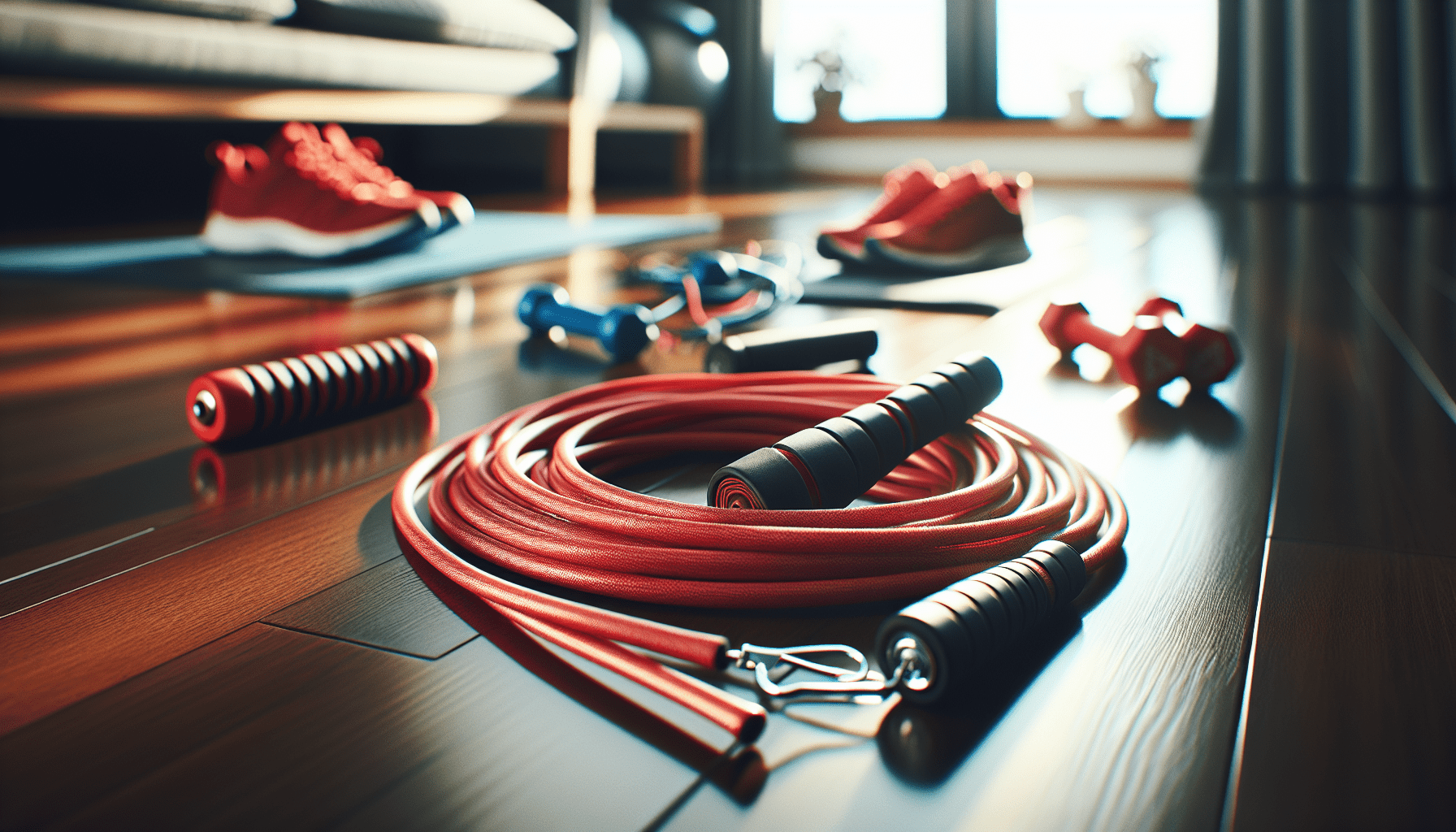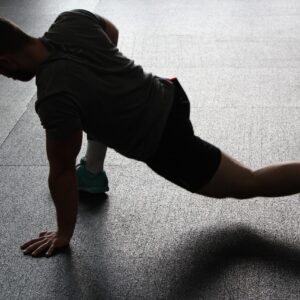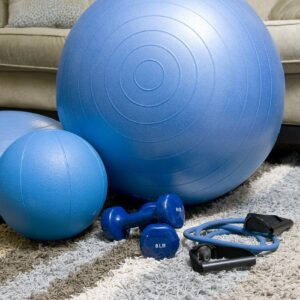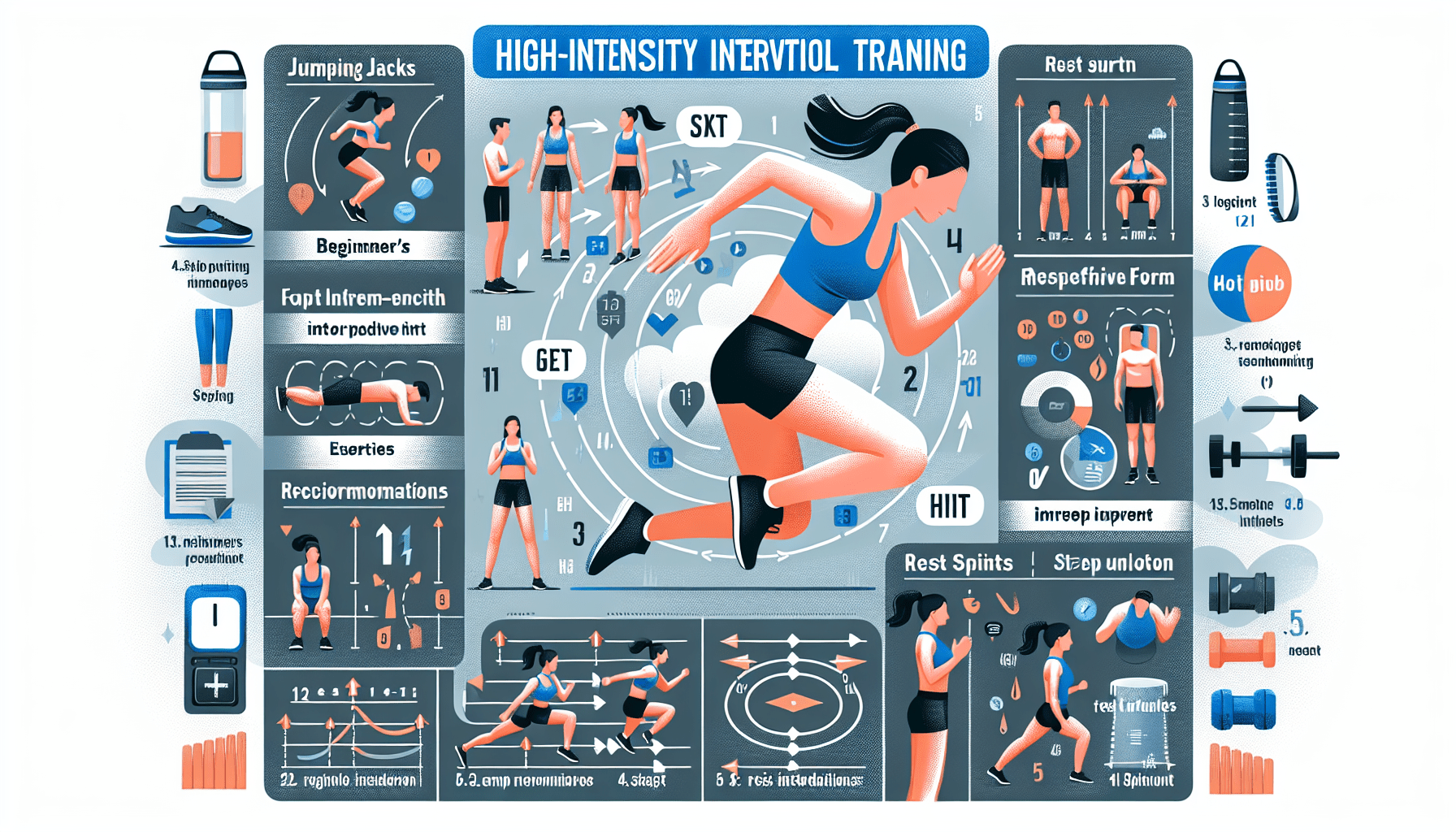Get your heart pumping and burn calories with these fun and effective cardio exercises you can do in the comfort of your own home. Whether you want to lose weight, improve your cardiovascular health, or simply have a good time while getting fit, these workouts are perfect for you. From dancing to high-intensity interval training, this article will guide you through various entertaining and rewarding ways to get your daily dose of cardio without ever having to leave your living room. So put on some music, grab your water bottle, and get ready to have a blast while breaking a sweat!

Jumping Jacks
Description
Jumping jacks are a classic cardio exercise that involves jumping while simultaneously spreading your legs wide and raising your arms overhead. This simple yet effective movement gets your heart racing, increases blood circulation, and engages multiple muscle groups in your body.
Benefits
Jumping jacks offer numerous benefits for your overall health and fitness. They help improve cardiovascular endurance, which is crucial for a healthy heart and lungs. The repetitive jumping motion also helps strengthen your leg muscles, including your quadriceps, hamstrings, and calves. Additionally, jumping jacks work your core muscles, including your abdominals and obliques, as you stabilize your body throughout the movement. They can also enhance coordination and improve your overall body awareness.
How to do it
To perform jumping jacks, start by standing upright with your feet together and your arms resting at your sides. From this starting position, jump up while simultaneously spreading your feet wider than hip-width apart and raising your arms overhead. As you jump, make sure to keep your core engaged and land softly on the balls of your feet. Then, jump again and return to the starting position by bringing your feet back together and lowering your arms. Repeat this motion for a desired number of repetitions, ensuring a smooth and controlled movement.
Burpees
Description
Burpees are a full-body exercise that combines elements of strength training and cardio. They involve a sequence of movements, including a squat, a push-up, and a jump, all performed in a continuous flow. Burpees are known for their high intensity and ability to increase heart rate quickly.
Benefits
Incorporating burpees into your workout routine can yield several benefits. Firstly, they provide an excellent cardio workout, boosting your heart rate and increasing calorie burn. This makes burpees an effective exercise for weight loss or overall fitness maintenance. Secondly, burpees engage multiple muscle groups, including your chest, shoulders, triceps, core, glutes, and legs. They help build strength and endurance in these areas, contributing to improved muscle tone and functional fitness. Lastly, burpees are a convenient exercise that requires no special equipment, making them accessible and suitable for home workouts.
How to do it
To perform a burpee, start standing with your feet shoulder-width apart. Bend your knees and lower into a squat position, placing your hands on the floor in front of you. Kick your feet back into a plank position, keeping your body straight and engaging your core. Perform a push-up by bending your arms and lowering your chest towards the floor. Return to the plank position and jump your feet forward to the squat position. From there, explosively jump up, extending your arms overhead. Land softly and repeat the entire sequence for the desired number of repetitions.
High Knees
Description
High knees are a dynamic and energetic exercise that involves lifting your knees as high as possible while running in place. This exercise mimics the movement of running and engages multiple muscle groups, making it an effective cardio workout.
Benefits
Incorporating high knees into your workout routine can offer several benefits for your fitness and health. Firstly, high knees increase your heart rate, improving cardiovascular fitness and stamina. This increase in intensity also leads to calorie burning, making high knees a great choice for weight management. Moreover, this exercise targets your leg muscles, including your quadriceps, hamstrings, and calves, helping to improve strength and muscle tone in these areas. Additionally, high knees promote better coordination and balance, as well as enhance lower body flexibility.
How to do it
To perform high knees, start standing with your feet hip-width apart. Begin by lifting one knee towards your chest as high as you can, while driving the opposite arm forward. Quickly switch legs, bringing the other knee up as the opposite leg lowers. Continue this running motion, keeping a brisk pace and focusing on lifting your knees as high as possible. Engage your core throughout the exercise and maintain an upright posture. Aim for a steady and controlled rhythm, gradually increasing your speed as you become more comfortable with the movement.
Mountain Climbers
Description
Mountain climbers are a challenging exercise that mimics the climbing motion. They primarily target your core muscles, while also engaging your arms, shoulders, and leg muscles. Mountain climbers provide an intense cardio workout and can help strengthen and tone your entire body.
Benefits
Incorporating mountain climbers into your workout routine offers several benefits for your fitness and overall well-being. Firstly, they are an excellent cardiovascular exercise that raises your heart rate and boosts endurance. This can lead to improved cardiovascular health and increased calorie burn, contributing to weight management. Secondly, mountain climbers engage your core muscles, including your abdominals and obliques, resulting in enhanced core strength and stability. Additionally, the arm and shoulder muscles are actively involved in this exercise, improving upper body strength and toning the arms. Lastly, mountain climbers promote better balance, coordination, and agility.
How to do it
To perform mountain climbers, start in a plank position with your hands directly below your shoulders and your body in a straight line. Engage your core and maintain a stable position throughout the exercise. Begin by bringing one knee towards your chest, keeping your foot off the ground. Quickly switch legs, bringing the opposite knee towards your chest as you extend the first leg back to the starting position. Continue alternating your legs in a running-like motion, as if you are climbing a mountain. Aim to maintain a smooth and controlled tempo, focusing on proper form and keeping your hips stable. Start with a moderate pace and increase the speed as you become more comfortable with the exercise.
Jump Rope
Description
Jump rope, also known as skipping rope, is a fun and versatile cardio exercise that involves jumping over a rope while maintaining a steady rhythm. This exercise can be performed indoors or outdoors, requiring minimal space and equipment. Jumping rope is not only a popular childhood pastime, but also an effective way to elevate your heart rate, burn calories, and improve coordination.
Benefits
Jumping rope offers a wide range of benefits for your physical fitness and overall well-being. Firstly, it is a high-intensity cardiovascular exercise that gets your heart pumping and improves endurance. Regularly incorporating jump rope into your workout routine can help enhance your cardiovascular health, increase lung capacity, and promote efficient oxygen delivery to your muscles. Additionally, jumping rope is a calorie-burning exercise that can contribute to weight loss or weight management when combined with a balanced diet. It engages multiple muscle groups, including your legs, core, arms, and shoulders, leading to improved strength, muscle tone, and overall body coordination. Moreover, jumping rope can be a fun and enjoyable way to improve agility, balance, and rhythm.
How to do it
To jump rope, start by holding the handles of the rope with your hands, and position the rope behind you. Stand with your feet together, and gently swing the rope overhead, bringing it in front of you. As the rope approaches the ground, jump up slightly and hop over it with both feet. Focus on landing softly on the balls of your feet to minimize impact on your joints. Keep your core engaged, and maintain an upright posture throughout the exercise. As you become more proficient, experiment with different jumping styles, such as alternating feet or performing double-unders (two rotations of the rope per jump). Start with shorter sessions and gradually increase the duration as your fitness level improves.
Running in Place
Description
Running in place is a simple yet effective cardio exercise that mimics the motion of running while staying stationary. It requires minimal space and equipment, making it a convenient option for home workouts or when outdoor running is not feasible. Running in place engages major muscle groups and increases heart rate, providing an excellent cardiovascular workout.
Benefits
Running in place offers numerous benefits for your fitness and overall well-being. Firstly, it is an effective way to elevate your heart rate and improve cardiovascular endurance. Regularly incorporating running in place into your workout routine can improve lung capacity, enhance circulation, and strengthen your heart. Secondly, this exercise engages multiple muscle groups, including your quadriceps, hamstrings, calves, glutes, and core. It helps build strength, endurance, and muscle tone in these areas, contributing to overall functional fitness. Additionally, running in place burns calories, making it an excellent choice for weight management or weight loss goals. Lastly, this exercise can be easily modified to suit your fitness level, allowing for gradual progression as you become fitter and stronger.
How to do it
To run in place, start by standing with your feet hip-width apart and your arms relaxed at your sides. Begin jogging on the spot, lifting your knees towards your chest and pumping your arms naturally, as if you were running outdoors. Maintain a brisk pace, and focus on lifting your knees as high as comfortable. Keep your core engaged, and maintain an upright posture throughout the exercise. Aim for a smooth and controlled movement, landing softly on the balls of your feet. Gradually increase the speed and intensity of your running as you become more comfortable and warmed up.
Dancing
Description
Dancing is a fun and joyful way to get your heart rate up and improve cardiovascular fitness. Whether you follow a choreographed routine or simply let loose to your favorite tunes, dancing engages your entire body in rhythmic movements, making it a fantastic cardio exercise.
Benefits
Incorporating dancing into your fitness routine can provide numerous benefits beyond just physical fitness. Firstly, dancing is a great way to boost your mood and relieve stress. It releases endorphins, the feel-good hormones, which can improve mental well-being and reduce anxiety. Secondly, dancing is an excellent cardiovascular exercise that gets your heart rate up and increases blood circulation. It can improve lung capacity, stamina, and overall endurance. Dancing also helps improve coordination, balance, and agility, as you move to the beat of the music and execute various dance steps. Moreover, dancing is a social activity that can enhance social connections and create a sense of community, whether you join a dance class or dance with friends or family.
How to do it
To dance, there are no strict rules or specific steps to follow. You can dance in your living room, in a dance studio, or even outdoors. Choose music that energizes you and makes you want to move. Start by warming up with some gentle stretching to prepare your muscles for physical activity. Then, let the music guide you and move your body according to the rhythm. You can experiment with different dance styles, such as hip hop, salsa, ballet, or freestyle. Follow along with dance tutorials online or create your own dance routine. The key is to enjoy yourself, have fun, and let the music inspire your movements. Dancing is a great way to express yourself creatively while reaping the benefits of a cardiovascular workout.
Boxing Moves
Description
Boxing moves, such as jabs, crosses, hooks, and uppercuts, are not only effective for self-defense and combat sports but also serve as a fantastic cardio workout. Shadowboxing, which involves performing boxing techniques without a punching bag or opponent, is a popular way to incorporate boxing moves into your cardio routine.
Benefits
Incorporating boxing moves into your workout routine can offer a multitude of benefits for your fitness and overall health. Firstly, boxing is a high-intensity cardiovascular exercise that rapidly increases your heart rate, resulting in improved cardiovascular fitness and endurance. It enhances lung capacity and oxygen uptake, leading to better delivery of oxygen to your muscles during physical activity. Secondly, boxing moves engage multiple muscle groups, including your arms, shoulders, core, and legs. They help build strength, power, and endurance in these areas, contributing to improved overall muscle tone and functional fitness. Additionally, boxing requires focus, agility, and coordination, which can enhance your mental acuity and body awareness. Lastly, boxing provides a great outlet for stress relief, allowing you to release tension and frustration while engaging in a challenging and empowering workout.
How to do it
To incorporate boxing moves into your cardio routine, you can start with shadowboxing. Stand with your feet shoulder-width apart, your knees slightly bent, and your fists guarding your face. Begin by throwing a series of jabs, which are quick straight punches with your lead hand. Follow with crosses, which are powerful straight punches with your rear hand. Include hooks, which are circular punches targeting the sides of your opponent, by rotating your hips. Finally, add uppercuts, which are upward punches targeting the chin or torso, by bending your knees and driving your hand upward from below. Alternate between these punches, maintaining a high pace and fluidity of movement. Visualize an imaginary opponent or focus on specific combinations to challenge yourself further. As you progress, you may consider incorporating other boxing-related exercises, such as punching a bag or working with a sparring partner.
Step-Ups
Description
Step-ups are a simple yet highly effective cardiovascular exercise that can be performed using a step platform, a bench, or even a sturdy elevated surface. This exercise involves stepping up and down repeatedly, engaging your leg muscles and raising your heart rate.
Benefits
Incorporating step-ups into your workout routine offers several benefits for your physical fitness and well-being. Firstly, step-ups are an excellent cardiovascular exercise that elevates your heart rate and stimulates your cardiovascular system. Regularly performing step-ups can improve cardiovascular endurance, lung capacity, and overall stamina. Secondly, this exercise targets your lower body muscles, including your quadriceps, hamstrings, glutes, and calves. It helps strengthen and tone these muscles, contributing to improved lower body strength and enhanced athletic performance. Additionally, step-ups can improve balance, stability, and coordination as you step up and down with control. Finally, step-ups are a versatile exercise that can be easily modified by adjusting the step height or adding weights to increase the challenge.
How to do it
To perform step-ups, start by standing facing a step platform or elevated surface. Position one foot on the step, ensuring the entire foot is secure and centered. Push through the heel of the foot on the step and engage your leg muscles as you step up onto the platform. Fully extend your leg, bringing your other foot up to meet the first foot on the platform. Step back down in a controlled manner, leading with the same foot that stepped up. Repeat the motion for the desired number of repetitions, then switch to the other foot leading. Keep your core engaged and maintain an upright posture throughout the exercise. You can adjust the step height or add weights (such as dumbbells or a weighted vest) to increase the intensity as needed. Start with a comfortable step height and gradually progress to higher steps as you develop strength and confidence.
Hula Hooping
Description
Hula hooping is not just a nostalgic childhood activity, but also a fun and effective cardio exercise for adults. It involves spinning a hoop around your waist, hips, or other body parts in rhythmic motions. Hula hooping engages your core muscles, coordination, and cardiovascular system, making it a fantastic full-body workout.
Benefits
Incorporating hula hooping into your fitness routine can provide multiple benefits for your physical and mental well-being. Firstly, hula hooping is an excellent cardiovascular exercise that gets your heart rate up and enhances circulation. This can improve your cardiovascular fitness, increase endurance, and contribute to weight management. Secondly, hula hooping engages your core muscles as you perform the spinning motions, leading to improved core strength, stability, and muscle tone. It also activates your back muscles, hip muscles, and leg muscles, providing a full-body workout. Moreover, hula hooping stimulates coordination, balance, and rhythm, as you focus on coordinating your movements with the hoop’s rotations. This exercise can also be a great stress reliever and mood booster, as it promotes the release of endorphins and allows for self-expression and creativity.
How to do it
To hula hoop, start by finding an appropriate-sized hoop that reaches around your waist when held vertically against your body. Stand with your feet hip-width apart and position the hoop around your waist or hips. Give the hoop a spin by pushing it in one direction and start rocking your hips in the same direction to keep the hoop going. Experiment with different grips and movements to find what works best for you. Maintain a relaxed and fluid motion, focusing on rotating your hips rather than trying to forcefully keep the hoop up. Gradually increase the speed of your movement as you become more comfortable and proficient. You can also try hula hooping with variations, such as spinning the hoop around your arms or legs, for added challenge and engagement of different muscle groups.




